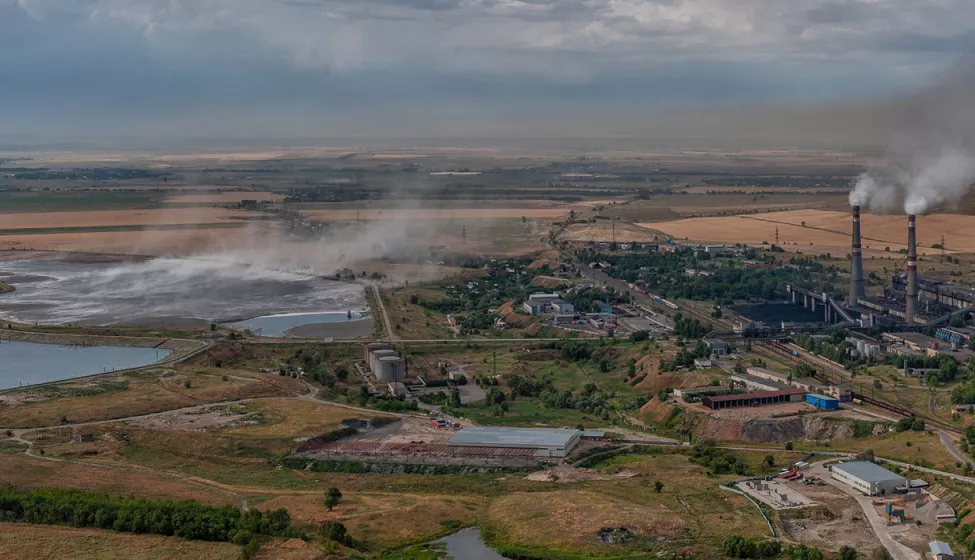June 5, 2023
Proposed expansion of federal 2015 CCR rule would include inactive and retired power plants
Last month, the Environmental Protection Agency proposed a rule that would require the safe management of coal ash dumped at legacy ash sites. These inactive facilities, known as ash ponds, collectively hold 500 million tons of coal combustion residuals (CCR) that remain unregulated at the federal level.
The proposed regulatory changes, introduced on May 18, 2023, would expand EPA's 2015 CCR rule, which currently only regulates active coal-fired power plants, to include inactive or "legacy" coal ash surface impoundments and landfills. The 2015 rule requires active power plants to safely dispose of coal ash, establish groundwater monitoring, take corrective actions, and establish post-closure care requirements for the byproduct of burning coal for energy.
The proposed update will require all owners and operators of legacy CCR surface impoundments at inactive facilities to comply with almost all existing requirements applicable to inactive CCR surface impoundments at active facilities. EPA is accepting public comments on the proposed changes until July 17, 2023.
More about the 2015 CCR rule
Enacted in 2015, the Disposal of Coal Combustion Residuals from Electric Utilities final rule regulates CCR as solid waste under the Resource Conservation and Recovery Act with the goal of preventing environmental releases of hazardous coal ash constituents (e.g., mercury, cadmium, arsenic).
The 2015 regulation also set standards for the closure of surface impoundments and unlined landfills that do not meet technical criteria for structural integrity or groundwater protection. The original CCR rule did not apply to inactive surface impoundments at inactive facilities, referred to as "legacy surface impoundments," but the D.C. Circuit Court of Appeals overturned the exemption for this type of surface impoundment in 2018 (Utilities Solid Waste Activities Group et al. v. EPA).
The current proposal would extend the regulatory reach of the 2015 CCR rule to legacy CCR surface impoundments, defined as "a surface impoundment that is located at a powerplant that ceased generating power prior to October 15, 2015, and the surface impoundment contained both CCR and liquids on or after the effective date of the 2015 CCR rule."
The proposed rule also establishes requirements for CCR management units (CCRMU). A CCRMU is defined as "any area of land on which any non-containerized accumulations of CCR are received, placed, or otherwise managed that is not a CCR unit." This could include, for example, historical CCR landfills and surface impoundments, inactive landfills, structural fill sites, or evaporation ponds. This expanded management would capture activities that have the potential to contaminate groundwater.
Preparing for expanded regulation
Legacy CCR surface impoundments at inactive facilities could soon be subject to all current requirements for inactive CCR impoundments at active facilities, apart from location restrictions and liner design criteria. As described in the 2015 CCR rule, those requirements would address areas including:
- Structural stability assessments
- Air criteria
- Inspections
- Groundwater monitoring and corrective actions
- Closure and post-closure care
- Record-keeping
- Notification and publicly accessible websites
EPA may also develop additional, new requirements tailored to address issues specific to legacy CCR surface impoundments under the proposed rule. Following the finalization of this rule, EPA will set compliance deadlines for these new requirements for owners and operators of sites with legacy CCR impoundments.
In addition, operators and owners will be expected to identify and delineate any CCRMU present at their facilities. These units will also be expected to comply with:
- Groundwater monitoring and corrective action requirements
- Closure and post-closure care requirements
The regulation would expand the 2015 CCR rule to include new types of CCR units that are not currently regulated at the federal level. EPA has stated that this rule is not expected to affect current power plant operations, as legacy sites no longer support these operations. However, this rule may be applicable to over 150 legacy impoundments and CCRMU across the country.
Owners and operators of these sites may incur costs related to unit closures, corrective actions, fugitive dust controls, inspections, recording-keeping, and compliance reporting. This new federal regulation would also mark changes to currently approved state CCR permitting programs, such as those in Oklahoma, Georgia, and Texas. As this proposal covers new types of CCR units, states will not have approval to issue CCR permits to legacy CCR sites and CCRMU; they will have to consider updating their CCR regulations through the state CCR permit program approval process.
What Can We Help You Solve?
Exponent's environmental scientists and engineers have extensive experience guiding clients through CCR rule compliance requirements. Our team is equipped to help clients respond to requests for public comment on proposed regulations, negotiate permit requirements, perform toxicity reduction evaluations, evaluate treatment options and discharge scenarios related to surface impoundment closures, and assess environmental impacts from current and legacy coal ash surface impoundments.

Water Sciences & Management
Sophisticated water consulting services, helping clients adapt to climate change and sustainability challenges.

Environmental & Regulatory Compliance
Rigorous analyses to help clients overcome complex environmental and regulatory hurdles and meet auditing obligations.

Environmental Assessment & Remediation
Conduct timely, accurate site assessment to identify risks and remediation options.

Industrial Contamination Management
Expert environmental services for a range of complex industrial contamination challenges.

Environmental Permitting
Extensive support for compliance with local, state, and federal permitting requirements.
![[EBS] Ecological & Biological Sciences - Environmental Risk Assessment - grey heron grazing in fresh water](/sites/default/files/styles/cards_home_card/public/media/images/grey-heron-2022-01-04-23-54-37-utc%281%29_0.jpg.webp?itok=5EB0lXjA)
Environmental Risk Assessment
Risk assessments for legacy spills and contamination, potential project and product impacts, and environmental remediation support.




